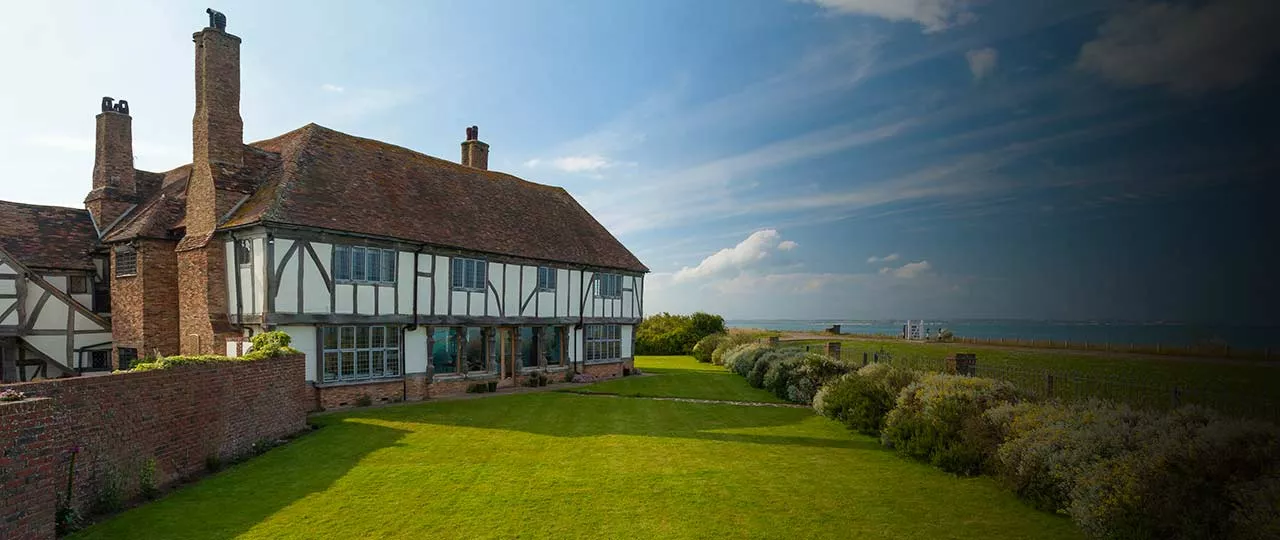
Tudor homes are found across the country and are a popular choice among homebuyers looking for a period property. But why do people like them and what do you need to look out for if you’re thinking of buying one?
Tudor-style homes are as British as it gets when it comes to period properties, with their distinctive design.
The Tudor era officially ran from 1485 to 1603, but many ‘Tudor homes’ may fall outside of this range. There was a huge revival in Tudor architecture in the mid-19th Century, so many actually come from this period – these are ‘Mock Tudor’ homes.
In fact, traditional Tudor properties from the actual era are more likely to look like gothic medieval constructions than what we’ve come to know as Tudor homes.
Why do people like them?
Tudor and Mock Tudor homes have always been a popular choice, but were given an added boost a couple of years ago with the success of TV show Wolf Hall. The grand halls and grandeur of the buildings led to a boom in demand for these amazing period properties.
But the demand has always been there to an extent. With their distinctive architecture, they scream period splendour. It’s no surprise it’s been one of the most copied architectural styles in this country.
They are in demand as they balance cosiness from the large fireplaces and deep colours with grandeur thanks to high ceilings, expansive rooms and period features. The craftsmanship in these properties also showcases attention to detail in the ornate features.
People buying a Tudor property are buying a piece of our country’s history that has stood the test of time.
How to spot a Tudor home
The most obvious design feature in a Tudor home is the oak timbers on show. Often coloured black and white, these showcase the building materials used in the construction.
They were joined together with tight fitting joints and wooden pegs. In between there was the classic wattle and daub, which was then whitewashed. This material was ideal as it could move and flex with the ever changing timbers.
Many examples have steep roofs covered in thatch, but not all, while tall and numerous chimneys and narrow windows were also popular features. The windows would often be made up of a number of smaller, leaded glass panes, while doorways can be quite low down compared to modern homes.
But the truth is that many of these features are more often found on Mock Tudor homes, while official Tudor era properties vary in style drastically.
Where to find them
- Tudor House, Rotherwick Hook, Hampshire. This charming Grade II listed cottage dates back to the 16th Century.
- Sandwich, Kent. Though this beach front property was built in the 1920s, it was created using original Tudor materials and in the Tudor style.
- Maidenhead, Berkshire. The Moat House, a 15th century home formerly known as Smewyns Manor, is a quintessential Grade II listed family home now a listed ancient monument.
- Shropshire. The Old Rectory at Hopton Castle has Tudor origins with later extensions dating from the Stuart and Regency periods.
- Stratford-upon-Avon. Shakespeare’s birthplace has a number of surviving Tudor-era properties.
- Lavenham, Suffolk. This small village is noted for its 15th Century church, Tudor buildings and half-timbered medieval cottages.
- Little Moreton Hall, Cheshire. This manor house is as Tudor as it gets thanks to its black and white timbered exterior, moat and manicured knot garden.
- Gloucester. This city is famed for its Tudor buildings, especially the New Inn – a timber-framed building now used as a pub and hotel. It’s the most complete surviving example of a medieval courtyard inn with galleries.
What to watch out for…
As with any period property, there can be a number of issues to watch out for. But as many true Tudor homes have stood for centuries, they can usually be relied upon as a solid investment.
- Hidden features. Over the decades, some of the original features might have been hidden. A thorough survey or an expert in such buildings could help uncover them.
- Listed. Most are listed, meaning you’ll be limited in what you can do to them.
- Thin walls. Tudor homes in their original state can have thin walls, which means noise travels.
- Upkeep. These old homes can take a lot of money to run, especially when it comes to repairs and heating.
- Drainage. These homes weren’t designed for showers, dishwashers, numerous sinks and toilets, so could have drainage issues.
- Timber problems. The wood is the heart of Tudor homes but as it’s not treated in the same way modern wood is, it could be liable to infestation.
